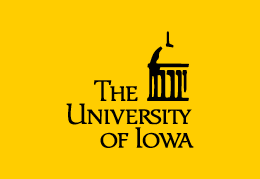Schneider Electric’s EcoStruxure helps University of Iowa manage 49 buildings, save $900,000 on energy in first year

The University of Iowa has deployed Schneider Electric’s EcoStruxure Building Advisor Managed Services as a system-agnostic solution to monitor 6.7 million square feet across 49 buildings with four different building management systems. In the first year of the project, the University realized numerous benefits, including:
- More than $900,000 in energy savings.
- Shift from reactive to predictive maintenance, reducing unscheduled maintenance and occupant complaints.
- National and industry recognition of its sustainability efforts and energy savings.
The implementation of Building Advisor represents an overlay of the University of Iowa’s building management systems, enabling the university to proactively discover building system problems more easily, as well as identify optimization opportunities before they lead to alarms, excessive waste of resources, occupant discomfort or system failure. This has served to drive the overall reduction of occupant complaints, unscheduled maintenance, and energy costs.
Streamlining building management
The University of Iowa selected certified EcoXpert partner, Control Installations of Iowa, Inc. (CI3), to work with Schneider Electric to implement Building Advisor. CI3 was selected for its deep expertise in building automation systems installation and integration, as well as its long-standing partnership with Schneider Electric. EcoXpert partners are trained and certified on Schneider Electric’s IoT-enabled EcoStruxure architecture and platform, and are the implementation arms of EcoStruxure all over the world.
The process began in 2017. Initial training was comprised of two onsite days. Subsequent training knowledge was delivered during monthly cadence reviews. Training was provided by Schneider with support from our Technology Partner, KGS, and our EcoExpert partner, CI3.
Transforming university-wide systems
Schneider Electric and CI3 worked with University personnel to establish industry best practices with Building Advisor. The solution includes an automated fault detection and diagnostics (aFDD) solution across 49 buildings encompassing academic, lab, recreational and office spaces. Schneider Electric provided essential technical training and support following the integration efforts, including all major HVAC equipment, air-handling units, heating/chilled water systems, pumps, terminal units, and four different building management systems (BMS). The new system uses the university’s existing data infrastructure, comprised of building management, process automation, and computerized maintenance management systems (CMMS), while web APIs enable two-way communication between the CMMS and aFDD software.
From reactive to proactive maintenance
As a benefit of the integration of Building Advisor, the University formed a multidisciplinary Analytic Response Group (ARG) that now uses Building Advisor to enhance prioritization and troubleshooting of building system issues, including the use of automated fault detection and diagnostics to check and prioritize the tasks that need attention, assign those tasks to a team member and manage each work order in the University’s CMMS. After the analytics system was fully deployed, Schneider Electric’s remote experts were on hand to advise the University of Iowa on their use of Building Advisor and interpretation of the data generated whenever necessary.
In addition to using Building Advisor, the University of Iowa’s Analytic Response Group now has the ability to:
- Fix comfort issues before occupants complain.
- Uncover hidden issues and identify optimization opportunities using analytics, saving time, energy, and money.
- Justify maintenance and project expense with clear return on investment.
- Clearly demonstrate the value that the facilities team delivers.
- Significantly increase team efficiency, accomplishing more within existing operating budgets.
Monitoring and maintenance drive sustainability success
In the first year, the University used Building Advisor as a system-agnostic solution to monitor 6.7 million square feet across 49 buildings with four different building management systems, which resulted in over $900,000 in energy savings. An average of 17 percent or 705 HVAC related work orders completed were predictive maintenance orders, ensuring that the University can plan and schedule maintenance more effectively. As a result, in April 2018, the University of Iowa’s new approach to maintenance was recognized in APPA Facilities Manager magazine, which named the University of Iowa as one of the 36 campuses across North America practicing campus sustainability. In addition, the University of Iowa was recognized by Lawrence Berkeley National Laboratory and the U.S. Dept. of Energy for its exemplary work to save energy through the use of Fault Detection Diagnostics.
Recently, Environmental Leader magazine also recognized Schneider Electric and the University of Iowa for the project’s success in providing significant sustainability and energy management results.
“We are proud to work with the University of Iowa to automate and streamline parts of its operations, enabling the maintenance team to more easily create the most comfortable environment possible for students, faculty, and staff while conserving vital resources,” said Justin Lavoie, vice president of Systems and Services – US Digital Buildings, Schneider Electric.
The University of Iowa continues to work closely with Schneider Electric and CI3 to review and act on analyses resulting from phase two of the Building Advisor implementation. This second phase added 29 more buildings to the portfolio and brings the total number of equipment assets connected to EcoStruxure Building Advisor analytics cloud to over 12,000.
The university can now add buildings as they are built, and they can be added to the same Building Advisor platform.
